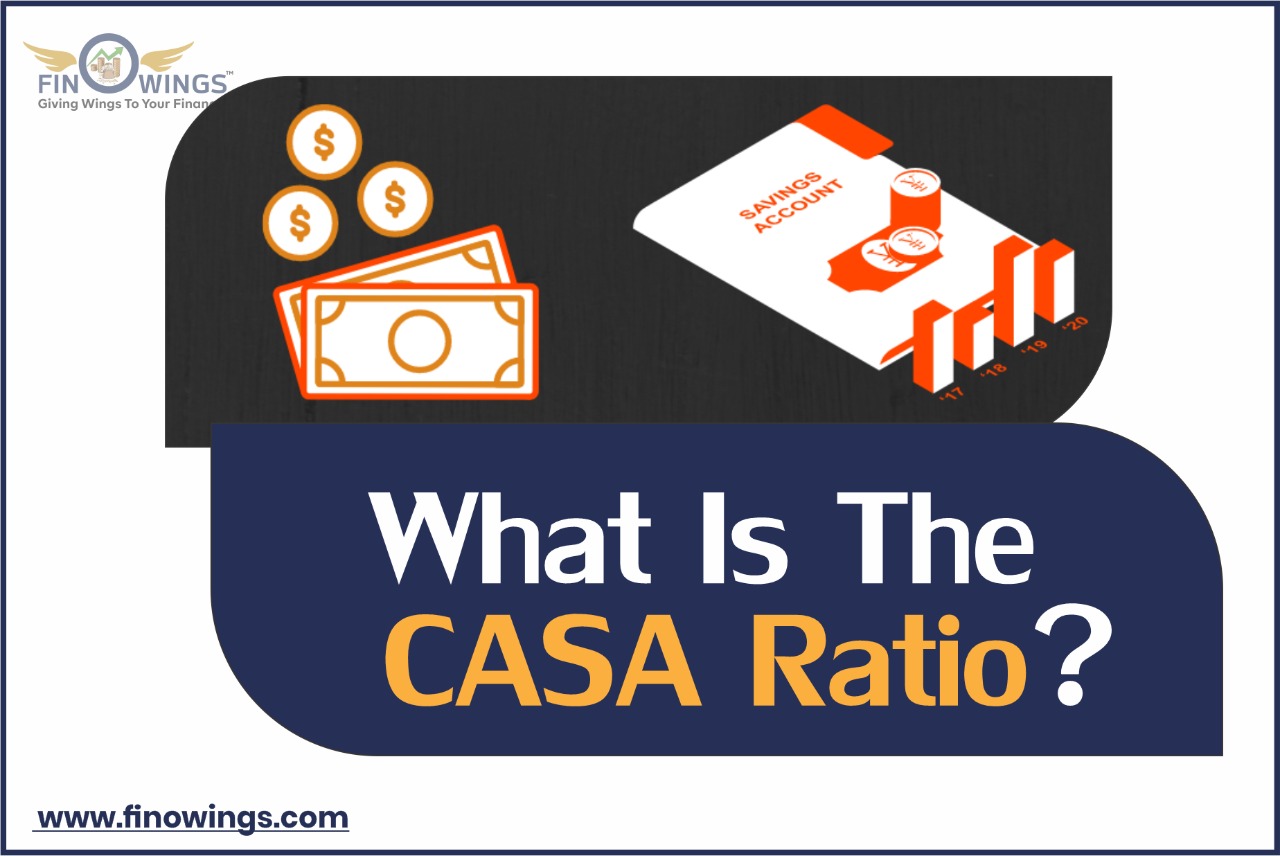Home >> Blog >> What is the CASA Ratio? Benefits, Importance, Ratio & Formula
What is the CASA Ratio? Benefits, Importance, Ratio & Formula

Table of Contents
Introduction
The acronym CASA stands for current and savings accounts. These are the two standard account services that all banks provide. You have probably heard these terms in your daily life, and most people even have savings accounts in today’s world.
On the other hand, a current account is a professional account primarily used by businesses. This account offers a variety of trade-related amenities. But instead of discussing current and savings accounts, we will discuss the CASA ratio. What is the purpose of this ratio, and how is it determined?
In this blog, let's dive deep to comprehend the CASA ratio and how it affects the bank.
What is the CASA Ratio?
Current and Savings Account Ratio is referred to as the CASA ratio. This ratio typically represents the proportion of money deposited in a bank's current and savings accounts to the total amount deposited. The higher the ratio, the lower the cost of funds.
Due to its low cost and significance as a major source of gain funds, CASA is crucial for banks. Banks offer no interest on current accounts and lower interest rates on savings accounts than other accounts.
Because of the lower funding costs in these accounts, the bank has a good source of money to support other activities. Therefore, the CASA ratio is an excellent indication to determine a bank's profitability.
What is the Importance of the CASA Ratio?
The CASA ratio is significant to the bank because it shows a higher fund deposit at a lower cost. This is generally advantageous because banks can increase their funding through CASA without increasing their management costs.
Banks typically pay no interest on current accounts and 3-4% interest on savings accounts. Therefore, these accounts benefit banks because of the nominal interest rate. Because of this, most banks encourage their clients to open current or savings accounts with them.
You may now understand why your banks call you and ask you to open accounts for your family members with them. The higher CASA ratio indicates that the bank has more current and savings accounts deposits.
The banks pay less interest to the consumer on these accounts, but they lend money at higher interest rates, increasing their profit. The bank must therefore maintain a higher CASA ratio.
Additionally, banks require capital to generate additional capital and offer customers better services. The CASA model enables banks to obtain capital at lower rates while earning higher interest. For banks, this model is cost-effective and low maintenance.
What Is The Impact Of The CASA Ratio?
Banks offer numerous additional services, such as fixed deposits, recurring deposits, primary and secondary market services, and so forth. However, banks must pay higher interest rates than savings and current accounts for these services. As a result, banks do not benefit as much from these services.
Additionally, regular consumers do not frequently use these services. On the other hand, banks must pay less interest on saving and current accounts because they are widely used by customers and necessary to run banking-related operations. These characteristics make these accounts more advantageous for banks, increasing customer emphasis on these services.
A bank can be more profitable if its current and savings account percentage is higher, whereas a bank can be less profitable if its CASA ratio is lower. CASA ratio, therefore, has a significant impact on the bank.
How to Calculate the CASA Ratio
You know the CASA ratio's importance and impact on banks' profits. So let's now look at the CASA ratio calculation used by banks to determine profitability.
CASA Ratio (%) = CASA Deposits / Total Deposits.
Almost all banks calculate the CASA ratio using this formula. Let's use an example to understand this better.
Assume that Bank XYZ has deposits totalling INR 100,000 crores, of which INR 30,000 crores are in savings accounts and INR 15,000 crores are in current accounts. So, using the following formula, we will determine the CASA ratio.
CASA ratio = (30,000 + 15,000) / 100,000
= 45,000 / 100,000
= 45%
This calculation enables us to determine that the bank's CASA ratio is 45%. This indicates that 45% of the total deposit of a particular bank is made up of savings and current account deposits.
What Are The Drawbacks Of CASA Ratio's?
Despite having many benefits, the CASA ratio is not immune to drawbacks. The following are the disadvantages of the CASA ratio:
-
The savings and the current account funds can be moved anytime because depositors can withdraw their money anytime.
-
The bank cannot finance long-term, large projects using funds from current and savings accounts. In addition, it may result in a mismatch between assets and liabilities.
-
Banks typically use funds from long-term deposits, including fixed deposits and others, to finance large projects.
-
Banks can increase the interest paid to depositors to encourage them to keep their money in the CASA accounts for longer.
-
More customers are likely to open current and savings accounts in banks if the interest rate is higher.
-
It increases the bank's capital and helps it retain deposits in the account of customers for a long time.
Conclusion
The CASA ratio can determine the funds ratio in a bank's current and savings accounts against the total deposit. Through this ratio, you can comprehend the bank's profitability. It can also be considered when making an investment decision for a specific bank. However, don't rely on this factor only. Considering all the elements before investing in banks or other places is essential. Contact Agrawal Corporate if you need help planning your investment strategies. They have many years of industry experience and are renowned for providing the best services.
Author
Frequently Asked Questions
The total deposit in the bank's current and savings accounts is measured with the help of the CASA ratio. The better the CASA ratio a bank has, the more efficient its operations are.
The increased CASA ratio indicates that the bank has surplus funds to run its operation.
The CASA ratio is one of the important indicators of a bank's performance, but it alone is not enough to measure the overall performance of the bank.
CASA Ratio stands for Current Account and Savings Account Ratio in banking.
The CASA Ratio, on the other hand, indicates the percentage of the total deposits of a bank which comes from the current and savings accounts, relative to term or fixed deposits.
For a bank, a high CASA ratio is generally good since it indicates low-cost funds, excellent liquidity, and better profit margins. Returns could suffer, though, if the bank is unable to lend these funds effectively. In general, a bank's financial strength is indicated by a larger CASA ratio.
The formula for CASA Ratio (Current Account Savings Account Ratio) is:
CASA Ratio= {CASA Deposits (Current + Savings Account Deposits) / Total Deposits} × 100





















PRITAM MAGAR | Posted on 02/09/2023
THANK YOU FINOWINGS FOR PROVIDING THIS VALUABLE INFORMATION ABOUT CASA.